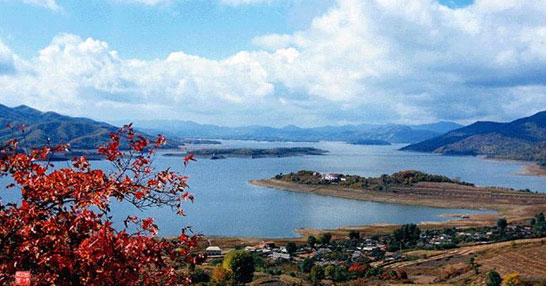
Jilin province is located in the central part of Northeast China and has a distinct temperate continental monsoon climate with a clear-cut change of four seasons. It is the important industrial base and commodity grain production base in China, which is known as an enthusiastic and harmonious city for living.
Jilin Province is situated in the north-eastern part of China, bordering Korea in the south and the Soviet Union in the east. Covering an area of over 180,000 square kilometers and the population reached 27.504 million comprising nationalities of Han, Korea, Manchu, Hui, Mongolian and Xibe. Changchun is the capital of Jilin province.
Jilin Province was under various administrations in different historical periods. It was called Donghudi in the Qin Dynasty (221 B.C. - 207 B.C.) and Han Dynasty (206 B.C-220 A.D), under the administration of the Liaoyang Xingzhongshu Province in Yuan Dynasty (1271-1368), known as Nuzhendi in the Ming Dynasty(1368-1644), it became Jilin Province in the Qing Dynasty (1644-1911). After the Russia-Japanese War of 1904, Japanese imperialists invaded in the north-eastern part of China and established the "Manzhouguo" with Changchun as its "capital". After the victory of the anti-Japanese war, nine provinces were set up in the Northeast. Jilin, Hejiang and Songjiang provinces were proclaimed within the present territory of Jilin Province. Hence the typical comprehensive industry has been established in the province, including iron, steel, coal, petroleum, electricity, machinery, chemical, textile and light industry. Changchun has become a new industrial city with developed machine-building industry as the capital of Jilin province.
Jilin culture is famous for its landscapes, gastronomy, folk customs, local opera and the cultural tourism resources are abundant. It is amazing you could view the natural beauty of the prestigious and historic cultural landscape (Korean, Manchu, Mongolian and other ethnic minorities). A song-and-dance duet show is a typical characteristic in Northeast. Lots folk art has become a "Chinese art" (intangible cultural heritage). Surprisingly enough, you could appreciate Jilin paper cutting, clay sculpture, farmer paints and other distinctive artistic style.
In the first quarter 2013, Jilin GDP have reached 2166.02 billion RMB with the increase of 10.2% compared the same period last year.Comparing with the neighboring provinces, Jilin GDP increase speed is higher than Liaoning province and Heilongjiang province.
In 2012, Jilin annual GDP approached 1.194 trillion RMB with an increase of 12 % compared the same period last year. During five-year period (2008 ~ 2012), Jilin average GDP growth rate reached 13.8%. In 2011, Jilin GDP exceeded 1 trillion RMB the first time in history entering the "trillion club." In 2012, Jilin economic growth was still maintained a double-digit growth.

 Inquiry Basket (
Inquiry Basket (

